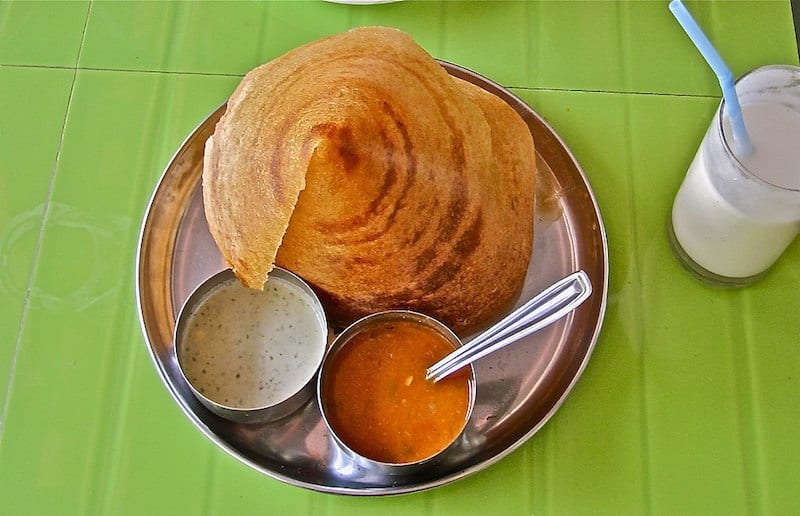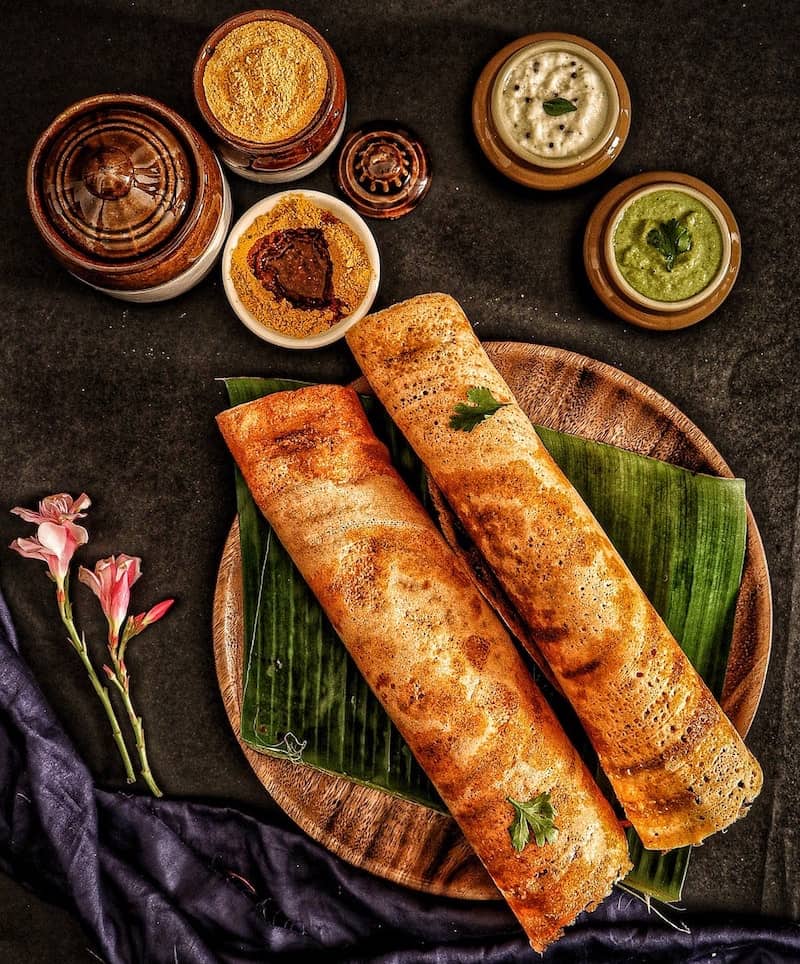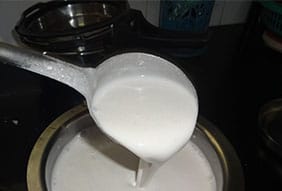Why Do We Ferment Dosa Batter?
If you love texture-filled, savory foods, the South Indian pancakes called dosas are the perfect option. Making the dosa batter has several stages, each of which adds to the nutrition and flavor.
To get the best dosa batter, you have to let it ferment before cooking. But why do we ferment dosa batter? It’s a key step in achieving the specific texture of dosa that’s the peirfect blend of softness, fluffiness, and crispiness.
This article will elaborate on the benefits of fermenting dosa batter and answer several other questions regarding the entire process.
What Is Dosa?
Let’s take one step back and talk about dosas and what makes them so unique. Perhaps you’ve seen a plethora of social media images with a lightly rolled crepe so thin, it looks like a piece of paper.
The term dosa is adapted from the Tamil language. These tasty crepes were originally called dosai. Interestingly, in South India, dosa is primarily a breakfast food. However, in Western countries, dosas are served both for lunch and dinner too.
What makes dosa so incredibly popular is the unique flavor, first and foremost. There are several different types of dosas, such as masala dosa, neer dosa, rava dosa, benne dosa, and cheese dosa. While some ingredients might change, all contain some rice flour, lentil flour, potatoes, fenugreek seeds, oil, and water.
When cooked, dosa has the perfect balance of softness and crispiness. Dosas are also the ideal blank canvas food fillings. Usually, you would fill them with meat, vegetables, or a starchy mixture. Dosas are nut-free and gluten-free, hence suitable for people with specific food sensitivities.
Is It Necessary to Ferment Dosa Batter?
If you have ever spoken to someone who has made dosa from scratch, they’ll tell you that fermentation is the key to producing the batter’s softness and fluffiness. Only when you get that specific texture gained by fermentation will you be able to enjoy the wholly delicious and crispy dosa.
However, fermentation is not only crucial for the final flavor, but it also has multiple other benefits. The fermentation ensures that the raw ingredients in dosa batter produce byproducts beneficial for human nutrition.
The bacteria exerted feature antimicrobial and antifungal properties, which means that they will help stabilize your digestive system’s environment. On top of that, fermentation of dosa batter includes an increase of vitamins B and C.

Fermentation of the dosa batter also promotes essential amino acid methionine, elevating the final product’s protein level.
While it’s possible to make savory crepes with the batter without fermentation, you won’t get the same results texturally that come after the batter has changed its chemical composition.
How Do You Ferment Dosa Batter Quickly?
Now you know why we ferment dosa batter, let’s find out how we can do it faster. The duration of the fermentation process will vary depending on the climate. If you live in a warmer climate, fermenting dosa batter might take between six and eight hours.
But if it’s winter, or you generally live somewhere where it’s cold all the time, leaving the batter overnight will sometimes not be sufficient. If that’s the case, there are a few ways you can expedite the fermentation.
Correct Soaking
Regardless of which ingredients you use for your dosa batter, you will have to soak them first. White rice, urad daal, lentils, as well as seeds will need to be soaked separately.
Rinsing them first is also important. Here’s another essential tip – make sure to grind each ingredient separately. This will ensure that fermentation acts faster. It will also increase the volume of food.
Filtered Water
When grinding the rice, beans, and seeds, use only filtered water. Chlorinated water can significantly impair the growth of yeast which leads to a much slower fermentation.
If you don’t have a filtration system at home, store-bought filtered water works great. Even if you have tap water that has been sitting for over 24 hours, that could work.
Correct Batter Consistency
Finally, ensure you have the right consistency before you cover the batter and leave it to ferment. Too much water, as well as too little water, will slow down the fermentation.
If you can’t assess the consistency using a utensil, feel free to use your (clean) hands to mix the batter. Not only will that provide a better measure of whether to add more water or other ingredients to the batter, but the heat of your body will promote fermentation as well.
Fermentation Starter
As the absolute last resort, you can add a fermentation starter to the dosa batter. Adding one tablespoon to the commercially prepared batter will help the fermentation. Alternatively, half a teaspoon of yeast, some water, and sugar will also kick-start the process.
Will Dosa Batter Ferment Without Salt?
The direct answer is yes. The dosa batter will ferment without salt. That is, the lack of salt won’t prevent fermentation. If the dosa batter without salt doesn’t ferment, it won’t be due to the lack of salt.
However, in terms of the batter’s quality, it’s better to use salt during the fermentation process. Adding salt to the dosa batter leads to a better consistency. But if you forgot to put salt in your dosa batter before fermentation, that shouldn’t be a cause for concern.
Make sure that you add the salt correctly once the fermentation is over. Whatever you do, don’t forget the salt before the cooking. Otherwise, the crepe won’t have the hallmark savory taste and won’t be as delicious.
In Summary
Engaging in homemade dosa crepes is a lengthy but worthwhile endeavor. You might be tempted to skip the fermentation portion of the recipe, but that would lead to your dosas tasting less than impressive.
The microorganism responsible for the fermentation gives it that recognizable texture and adds many health benefits. If you’re worried that fermentation will take too long, there are a few shortcuts you can try.
Make sure to use filtered water and soak and grind all the ingredients separately. Finally, for optimal batter consistency, add salt before fermentation, although adding it later won’t ruin the flavor.








